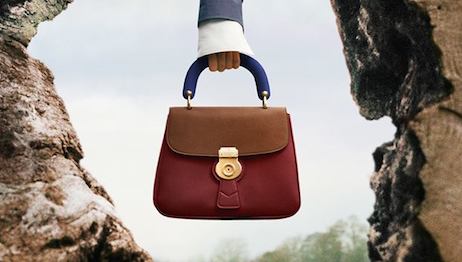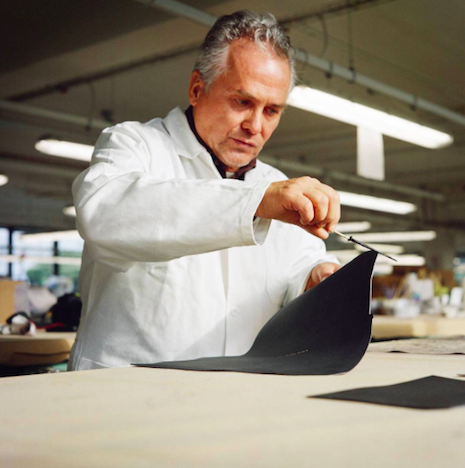 Burberry's DK88 handbag. Image credit: Burberry
Burberry's DK88 handbag. Image credit: Burberry
The Burberry Foundation is cutting down on the waste from its leather goods production through a recycling collaboration.
Burberry’s five-year partnership with sustainable luxury company Elvis & Kresse will see at least 120 tons of the house’s leather scraps transformed into accessories and home goods. The leather industry makes about 800,000 tons of waste per year, most of which is typically destroyed.
Reduce and reuse
Elvis & Kresse originated as a means to reduce the waste created by broken fire hoses in London by turning the no longer operable hoses into lifestyle products. Now, the company has expanded its focus to leather goods in partnership with Burberry.
Backed by a grant from the Burberry Foundation, Elvis & Kresse will design and sell a collection of goods that are made using remnants from the production of Burberry leather goods. Even when leather cutting is strategized to try to reduce the amount of waste created, there are unavoidable small pieces of hide leftover from the process.
Elvis & Kresse is now working with Burberry to recycle its leathers. Image credit: Elvis & Kresse
Elvis & Kresse has developed a process by which these pieces are woven together by hand to form a new hide.
In addition to recycling what would otherwise be wasted, this partnership will donate half of profits from sales of the merchandise to charities centered on sustainability.
“We are delighted to be supporting the work of Elvis & Kresse and providing them with the leather off cuts to create truly innovative products,” said Christopher Bailey, president and chief creative officer at Burberry, in a statement. “Leather is a precious material, yet many of the off cuts generated by the design process are seen as worthless.
“We believe that this can change, and we are proud to lead the way in showing how creativity and craftsmanship can play a part in solving this issue,” he said.
In addition to the recycled collection, Burberry’s partnership will include apprenticeship and work experience opportunities as well as events, workshops and competitions, which will help reach thousands.
While scraps would have previously been discarded, as sustainability becomes more of a focus, brands are finding new ways to use these high quality skins in creative ways.
Hermès' Petit h, for instance, takes leftover fabric and pieces with slight imperfections and turns them into unique pieces that sit outside of a fashion season. While using remnants might not seem like a luxurious concept, Hermès has used digital content to prove otherwise (see story).

